How to grow lush planted tanks without CO2 injections
Embarking on the journey of creating a low tech planted tank can be both exciting and rewarding. This approach allows aquarists to cultivate a beautiful and thriving aquatic environment without the complexities and expenses associated with CO2 systems. This article will explore various strategies and best practices to grow lush, vibrant aquarium plants solely through natural means, setting a clear path for enthusiasts who prefer a more straightforward approach to aquarium keeping.
By focusing on the basics of plant care and leveraging the natural biological processes within the aquarium, you can achieve a stunning aquatic landscape. This method not only simplifies maintenance but also makes the hobby accessible to beginners and those with a preference for minimalism in their setups.
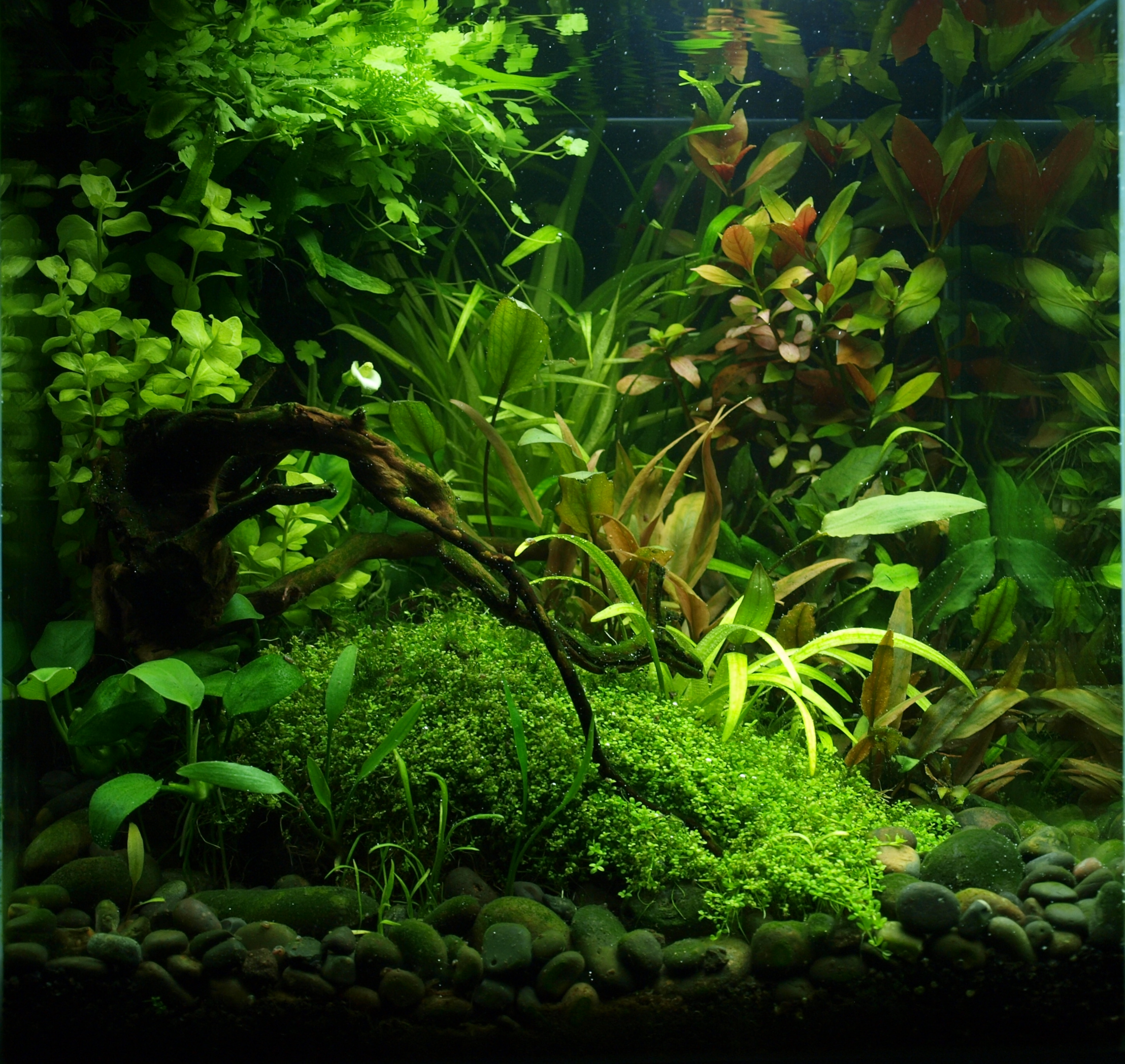
Understanding Plant Basics
Aquatic plants, much like their terrestrial counterparts, require light, nutrients, and a suitable substrate to thrive. In the context of a low light aquarium plants no CO2 setup, it's crucial to understand that these plants have adapted to grow under minimal light conditions and do not necessarily require additional CO2 supplementation. These adaptations make them ideal for environments where natural CO2 levels, derived from fish respiration and decomposition, suffice.
Such environments mimic natural ecosystems where plants grow without human intervention. Emulating these conditions in your aquarium means choosing the right plants and providing them with the necessary resources in a balanced manner. This approach reduces the need for frequent adjustments and fosters a stable aquatic environment conducive to natural plant growth.
Choosing the Right Plants
Selecting the right plants is pivotal in setting up a successful aquarium without CO2 injections. The best low tech aquarium plants are those that naturally thrive in low-light and low-CO2 conditions. Species such as Anubias, Java Fern, and Cryptocoryne are renowned for their hardiness and ability to flourish under such conditions. These plants are not only beautiful but also require less maintenance, making them perfect for beginners.
When planning your plant layout, consider the growth patterns and space requirements of each species to ensure a balanced and aesthetically pleasing aquarium. Incorporating a variety of low CO2 aquarium plants enhances the ecological diversity of your setup and contributes to a more robust and resilient plant community.
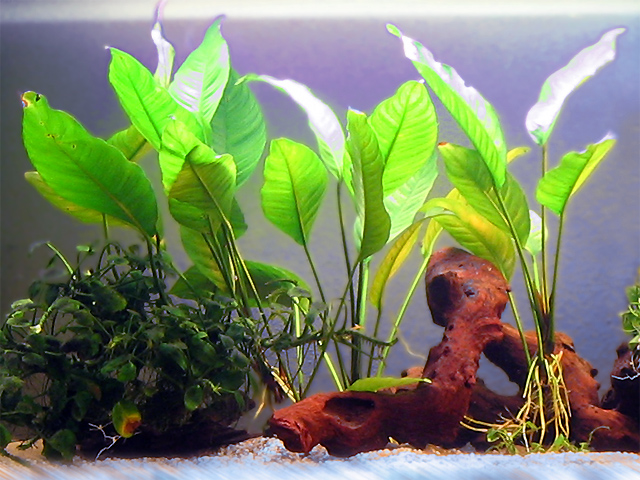
The Importance of Lighting
Light is a fundamental element in any planted aquarium, especially when growing low tech plants. While these plants are adapted to thrive in low-light conditions, selecting the right type of lighting can significantly enhance their growth and coloration. LED lights that mimic natural sunlight can provide the necessary spectrum of light while being energy efficient.
For those setting up a low light no CO2 aquarium plants tank, it's important to balance the intensity and duration of light to prevent algae growth, which thrives under excessive light. The goal is to provide just enough light to support plant photosynthesis without overwhelming the natural balance of the tank. This strategy is key to maintaining a healthy and visually appealing aquarium without the need for CO2 injections.
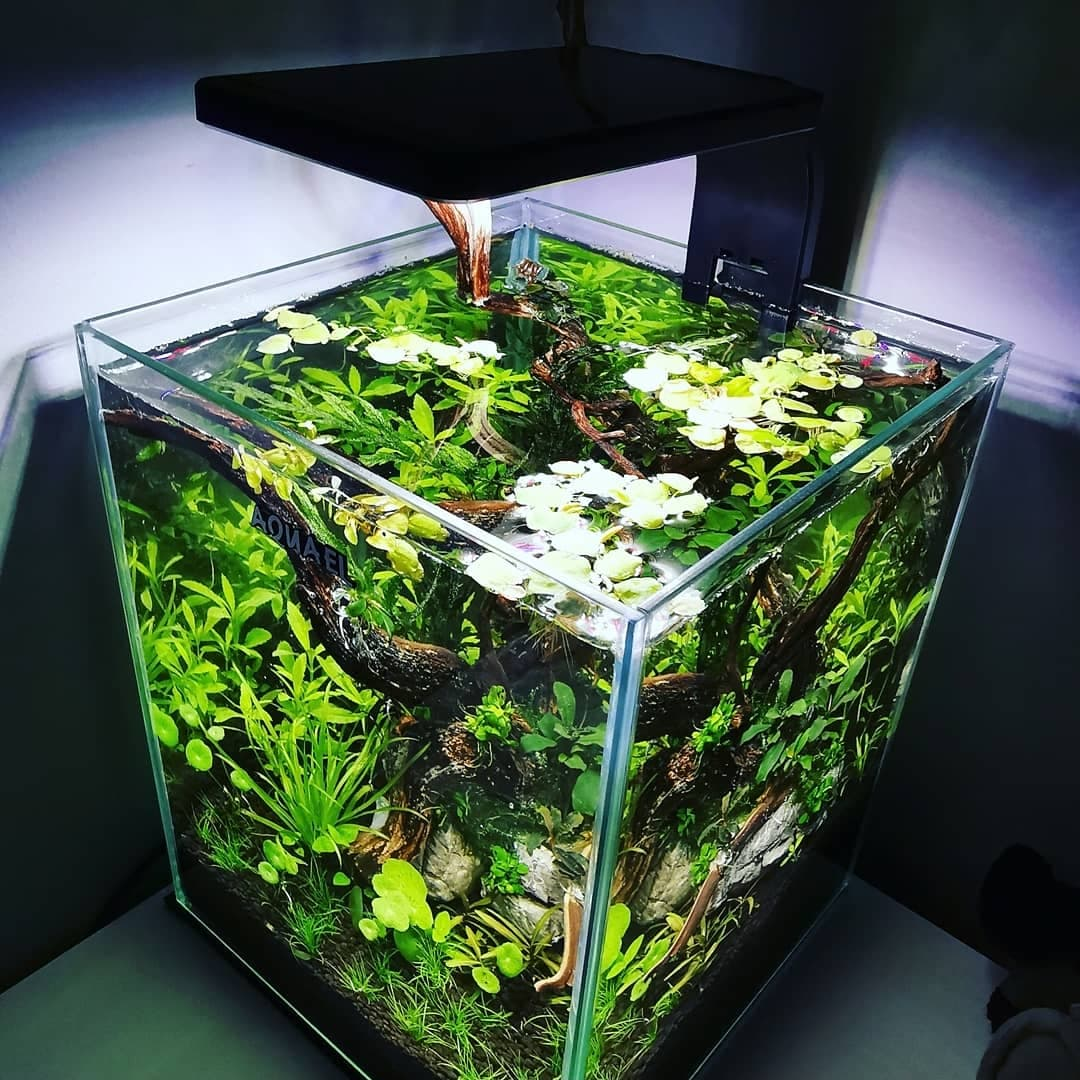
Optimising Natural CO2 Sources
In low tech tanks, optimising natural sources of CO2 can greatly enhance plant growth without the need for a CO2 injection system. The decomposition of organic matter such as fish waste and uneaten food can provide a steady supply of CO2 that supports growing plants. In these setups, creating a balanced ecosystem where the bioload naturally generates enough CO2 for the plants is key to maintaining planted tanks without additional CO2 sources.
For aquarists maintaining low light tanks, leveraging natural CO2 production can be sufficient to meet the growth requirements of less demanding plants like Java Fern and Java Moss. These plants adapt well to low light and low tech conditions, where growth rates may be slower but still contribute to a lush, green ambiance in the tank. This approach not only simplifies maintenance but also reduces the need for complex CO2 systems, aligning with the naturalistic approach of low tech planted tanks.
Effective Use of Substrates
Choosing the right substrate is crucial in a low tech tank because it supports plant growth by providing essential nutrients and anchoring the plant roots. A nutrient-rich substrate can act as a long-term nutrient store, which is particularly beneficial in planted tanks where CO2 injection is not used. This type of substrate releases nutrients slowly, matching the natural growth rates of low tech plants, which tend to grow at a slower pace compared to those in high-tech setups.
In planted aquariums, using a nutrient-rich substrate can compensate for the lower availability of CO2 by bolstering the nutrient supply directly to the roots of growing plants. Furthermore, monitoring water parameters regularly ensures that the nutrient levels remain balanced, preventing issues like algae overgrowth which can compete with plants for nutrients and light. This careful management of the environment helps maintain healthy growth in low tech tanks, making them vibrant and thriving ecosystems without reliance on a CO2 system.
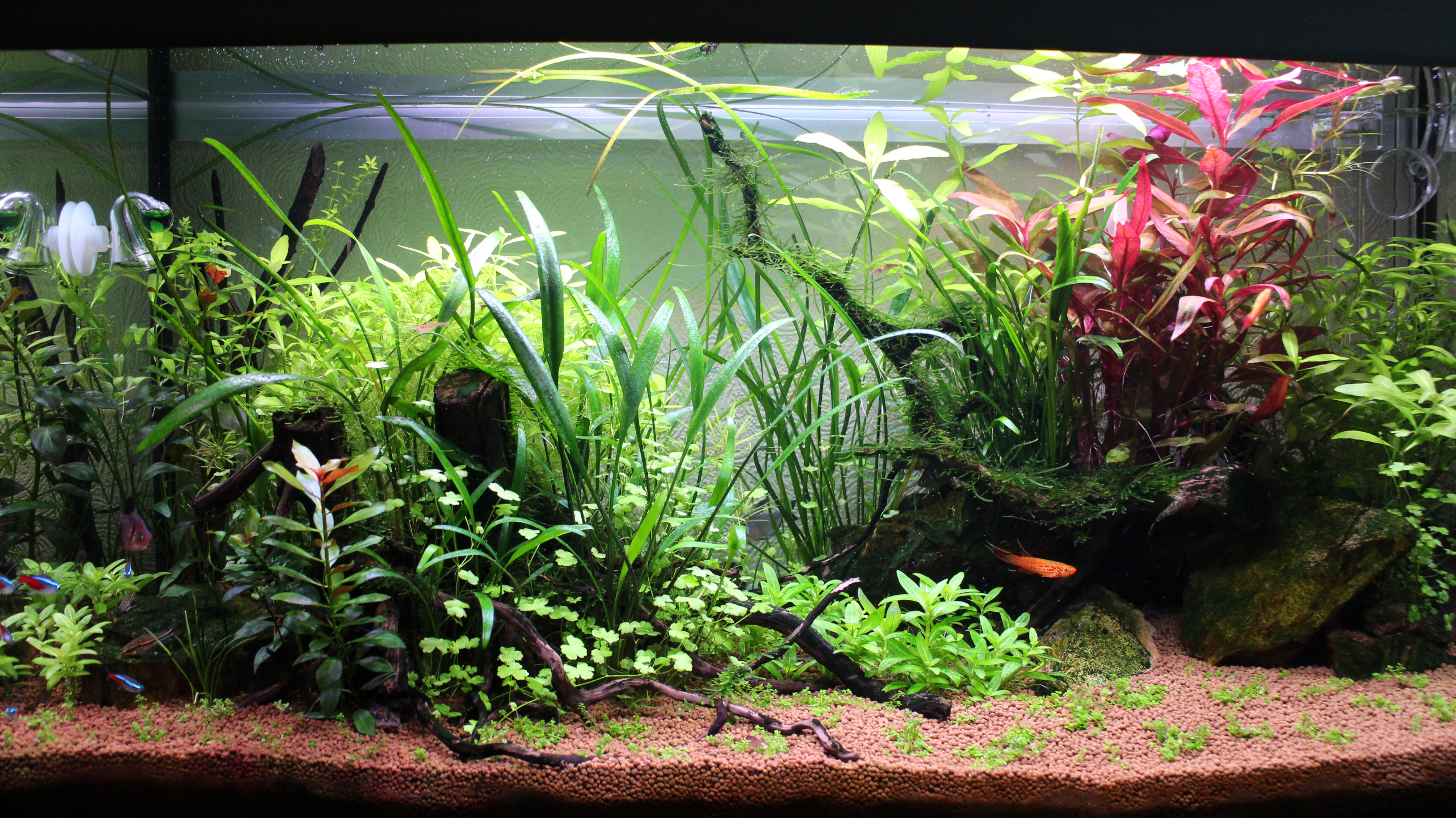
Nutrient Management
Effective nutrient management is critical in fostering healthy plant growth in planted tanks, especially those without CO2 injection. In low tech tanks, the balance of nutrients must be carefully managed to support growth without promoting algae. This involves using a combination of nutrient-rich substrate and selective liquid or tablet fertilizers that complement the natural diet of the tank inhabitants. By providing a controlled amount of nutrients, you can encourage robust growth in plants while maintaining clear and healthy water.
It's also important to monitor water parameters regularly to adjust nutrient dosages as needed. Over-fertilization can lead to nutrient imbalances that favor algae over planted aquariums. In low tech settings, maintaining a balance that supports growing plants without overwhelming them is key. This subtle approach helps maximize growth rates while keeping maintenance low and enjoyment high.
Water Circulation and Oxygenation
Proper water circulation is essential in low tech planted tanks as it ensures even distribution of nutrients and maintains stable water parameters. Good circulation helps simulate the natural currents that plants experience in the wild, which can enhance growth by ensuring that all parts of the planted tank receive equal access to nutrients and light. Additionally, effective water movement helps prevent dead spots where detritus can accumulate and degrade water quality.
Oxygenation is another critical component in low tech tanks, particularly in those with limited CO2 systems. While growing plants contribute oxygen to the water during the day, at night they consume oxygen, which can stress aquatic life if levels drop too low. Therefore, ensuring that your tank has adequate surface agitation from filters or air stones can help maintain oxygen levels throughout the 24-hour cycle. This balance supports both healthy fish and plant growth, making your tank a thriving ecosystem.
Role of CO2 in Planted Tanks
Although this guide focuses on low tech planted tanks without direct CO2 injection, it's important to understand the role of CO2 in plant growth. CO2 is a fundamental component of photosynthesis, the process by which plants convert light into energy. In low tech tanks, the natural CO2 available from fish respiration and decomposition can often suffice for low CO2 aquarium plants that are adapted to grow under such conditions. However, recognizing the signs of CO2 deficiency is crucial for maintaining healthy planted tanks.
If plants begin to show slow growth rates or poor coloration, it might indicate that the natural CO2 levels are inadequate. While CO2 systems are not a focus in low tech environments, enhancing natural CO2 through increased stocking density or more frequent feeding can sometimes help. Always monitor water parameters closely when making these adjustments, as they can affect the overall health of your tank.
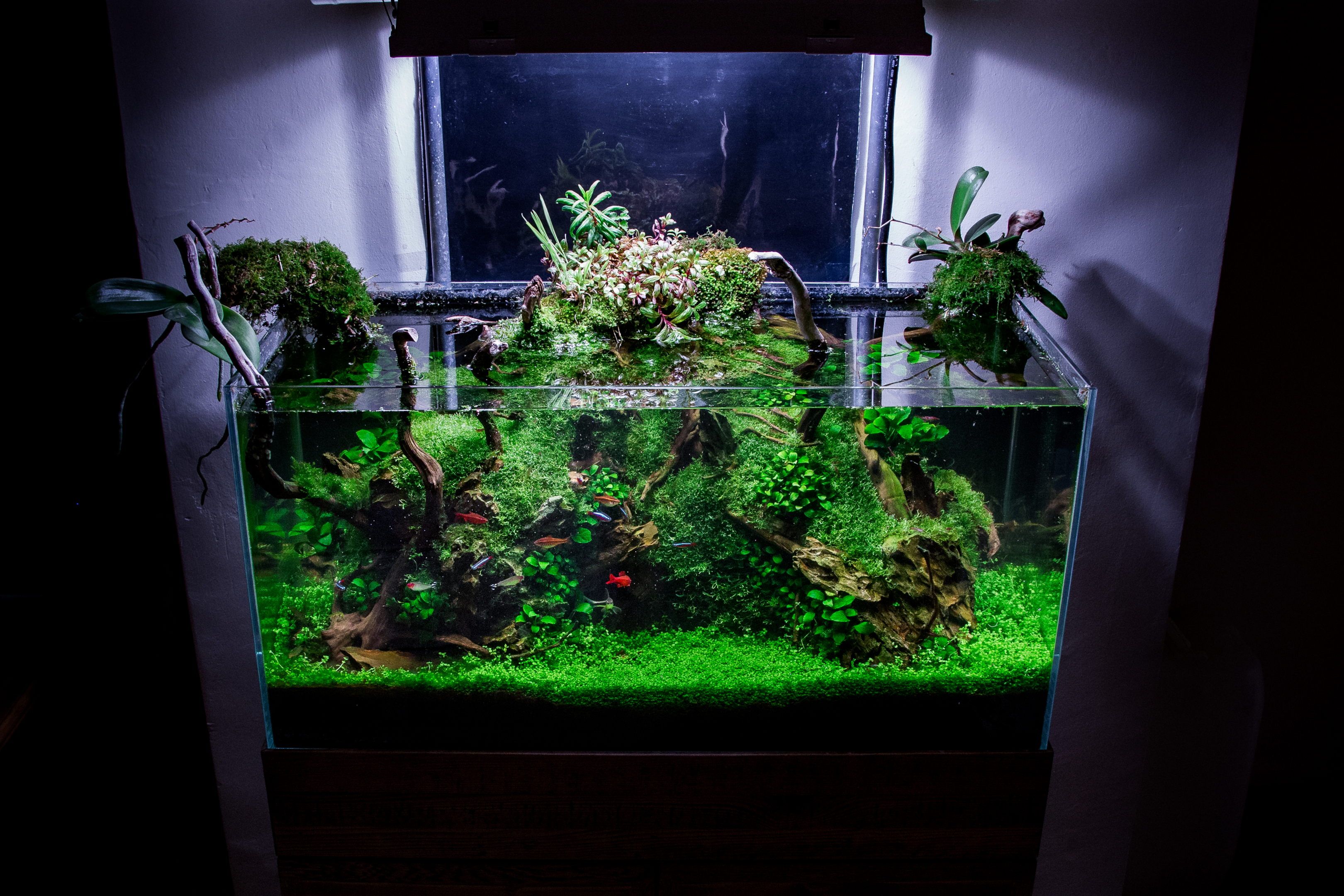
Regular Maintenance Routines
Maintaining a low tech tank requires consistent, regular maintenance to ensure optimal plant growth and tank health. Regular pruning of plants not only keeps your tank looking tidy but also encourages new growth by removing old or dead material that can decay and affect water quality. Additionally, consistent water changes help manage nutrient levels and remove excess organic matter, which is especially important in low tech tanks where water parameters can fluctuate more noticeably.
It's also beneficial to clean and inspect all equipment routinely, including filters and pumps, to ensure they are functioning correctly. In low tech planted tanks, the stability of water parameters is often the key to success, as drastic changes can stress both plants and fish. Establishing a routine that includes checking substrate conditions, cleaning plant leaves, and monitoring growth can greatly enhance the overall vitality of your aquarium.
Innovative Technologies and Tools
While low tech tanks typically eschew complex machinery, certain innovative technologies can enhance plant growth without resorting to CO2 injections. For example, advanced LED lighting systems can be programmed to provide optimal light spectrums and cycles, which are crucial for growing plants in planted tanks. These lights can mimic natural daylight cycles, encouraging healthier and more natural growth even in low light conditions.
Additionally, auto-dosers for fertilizers can help maintain consistent nutrient levels in the tank, which is vital for low tech planted aquariums. By automating the dosing of nutrients, you ensure that plants receive a steady supply of essential elements without the risk of human error. This can lead to steadier growth rates and healthier plants, all while keeping the system simple and easy to manage.
Conclusion
Creating lush, vibrant planted tanks without CO2 injections is entirely feasible and can be a rewarding endeavour for any aquarist. By focusing on the basics such as choosing the right plants, optimizing natural CO2 sources, and employing simple yet effective technologies, you can cultivate a thriving aquarium that mimics the beauty and complexity of a natural habitat. Remember, the key to success in a low tech tank is consistency and attention to water parameters and plant growth.
As you explore different approaches and learn what works best for your specific setup, you'll find that maintaining a beautiful planted tank without a CO2 system is not only possible but also immensely satisfying. It encourages a deeper understanding of the natural processes at work in your aquarium and fosters a greater appreciation for the delicate balance of life underwater.
Meet our bestseller! The Pro-Elite Series Complete Aquarium CO2 System with New Inline CO2 Diffuser!




